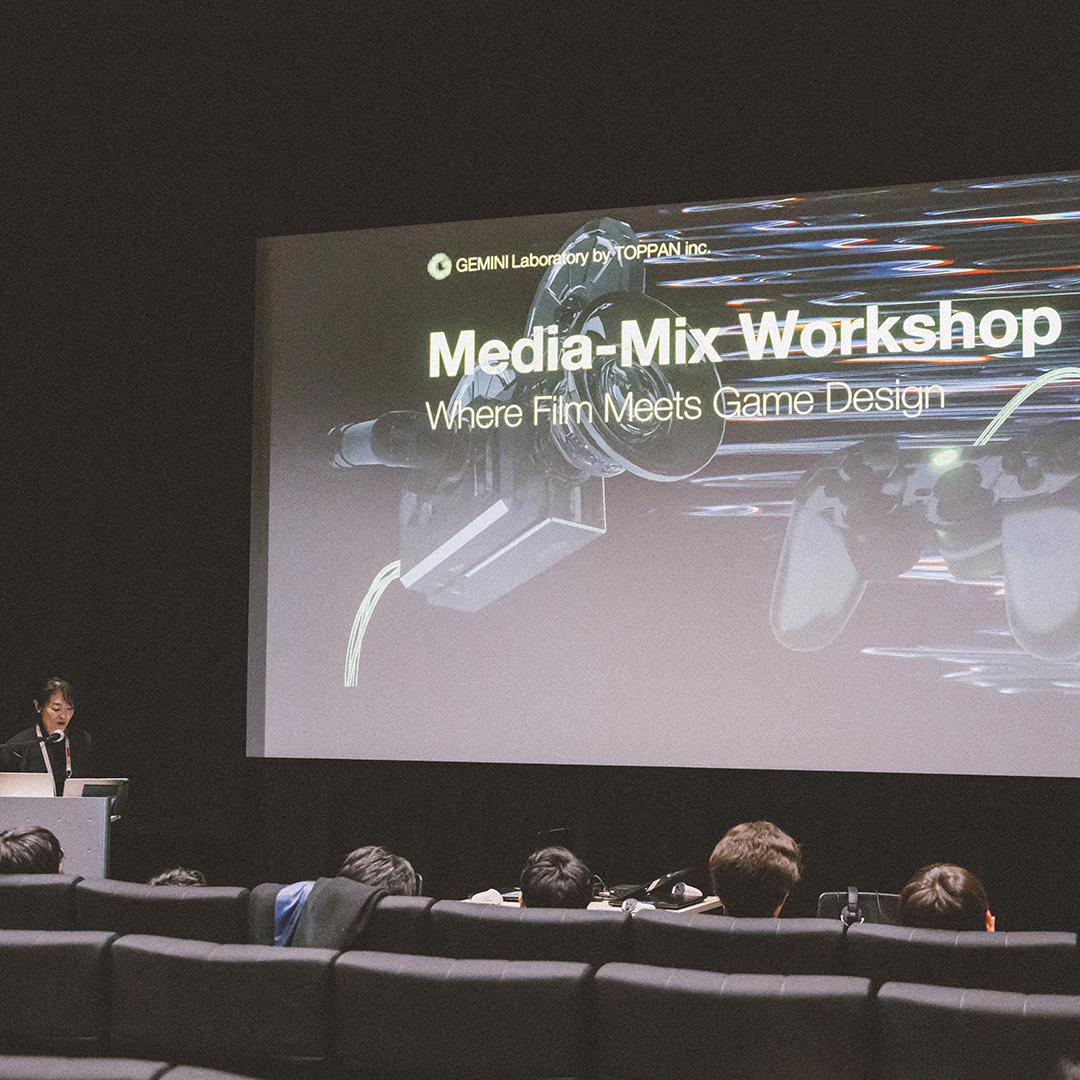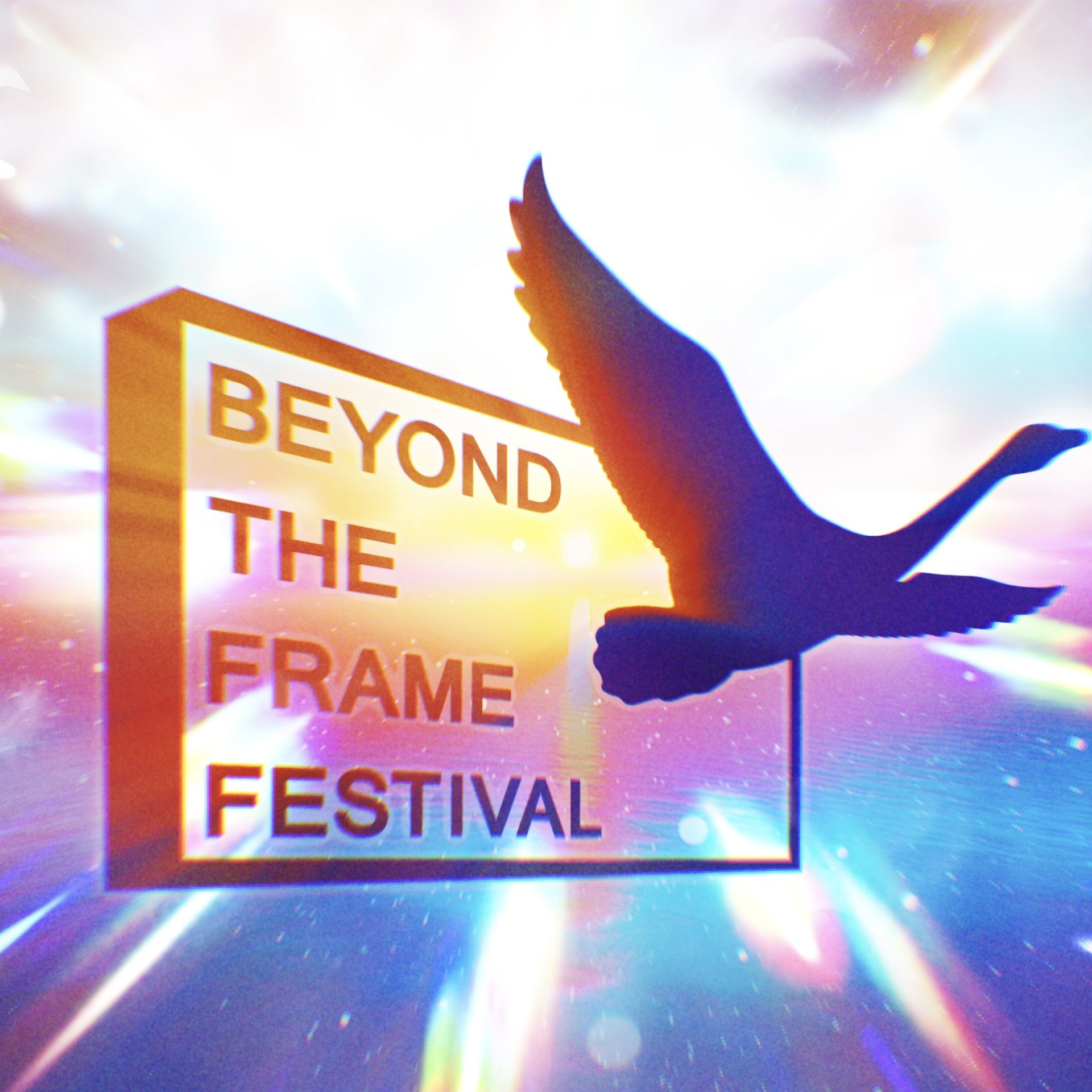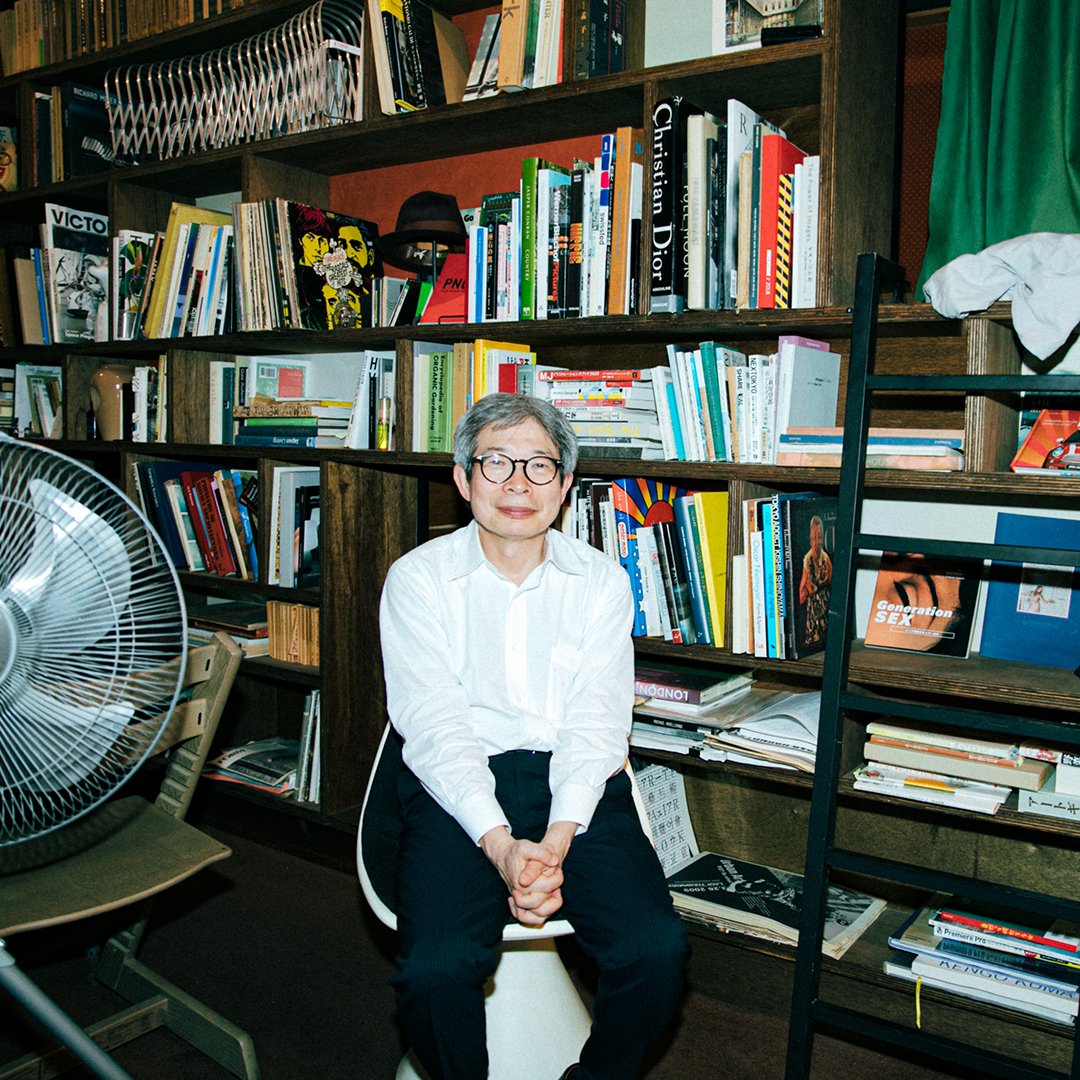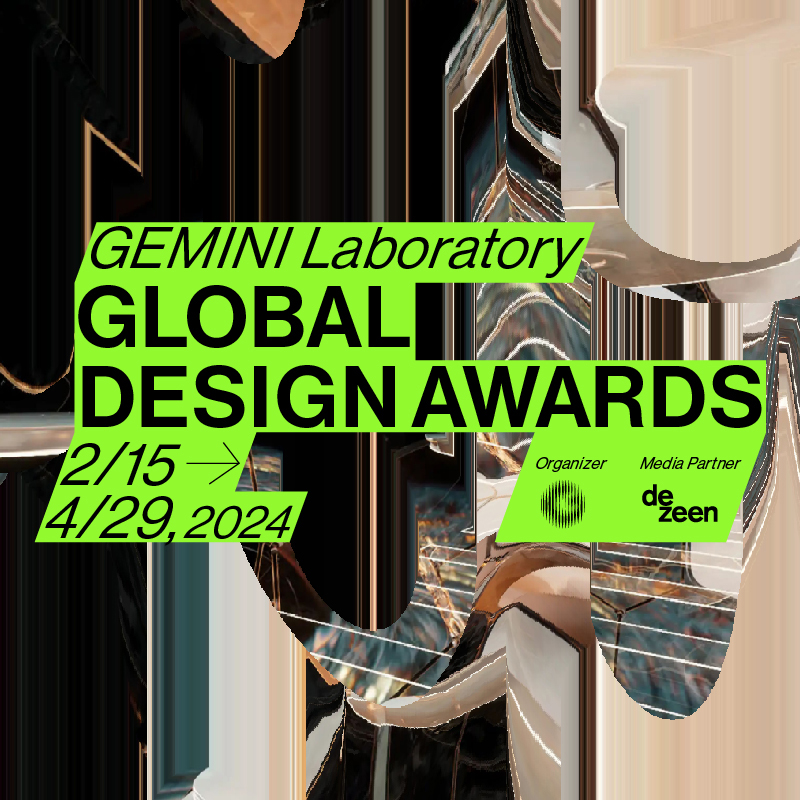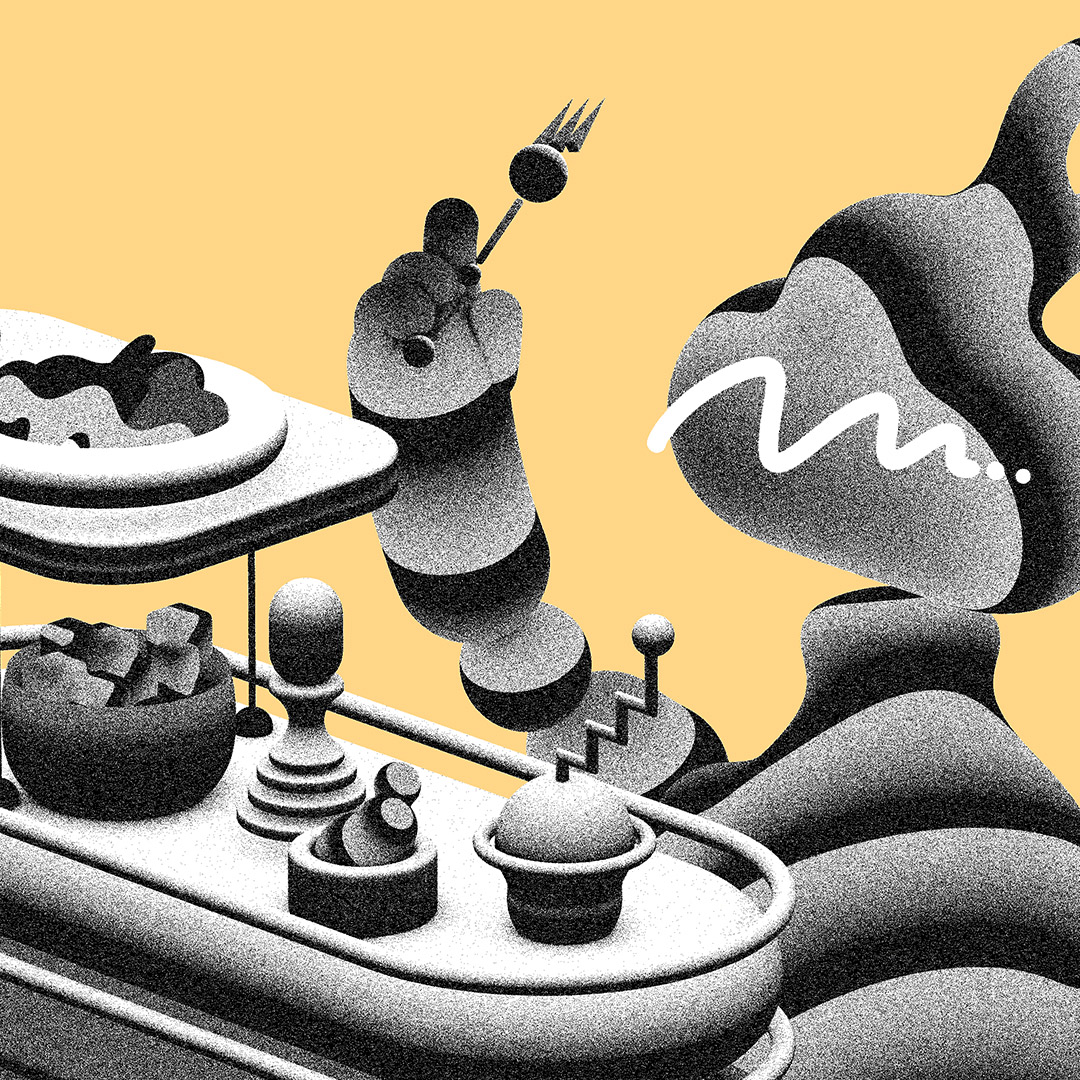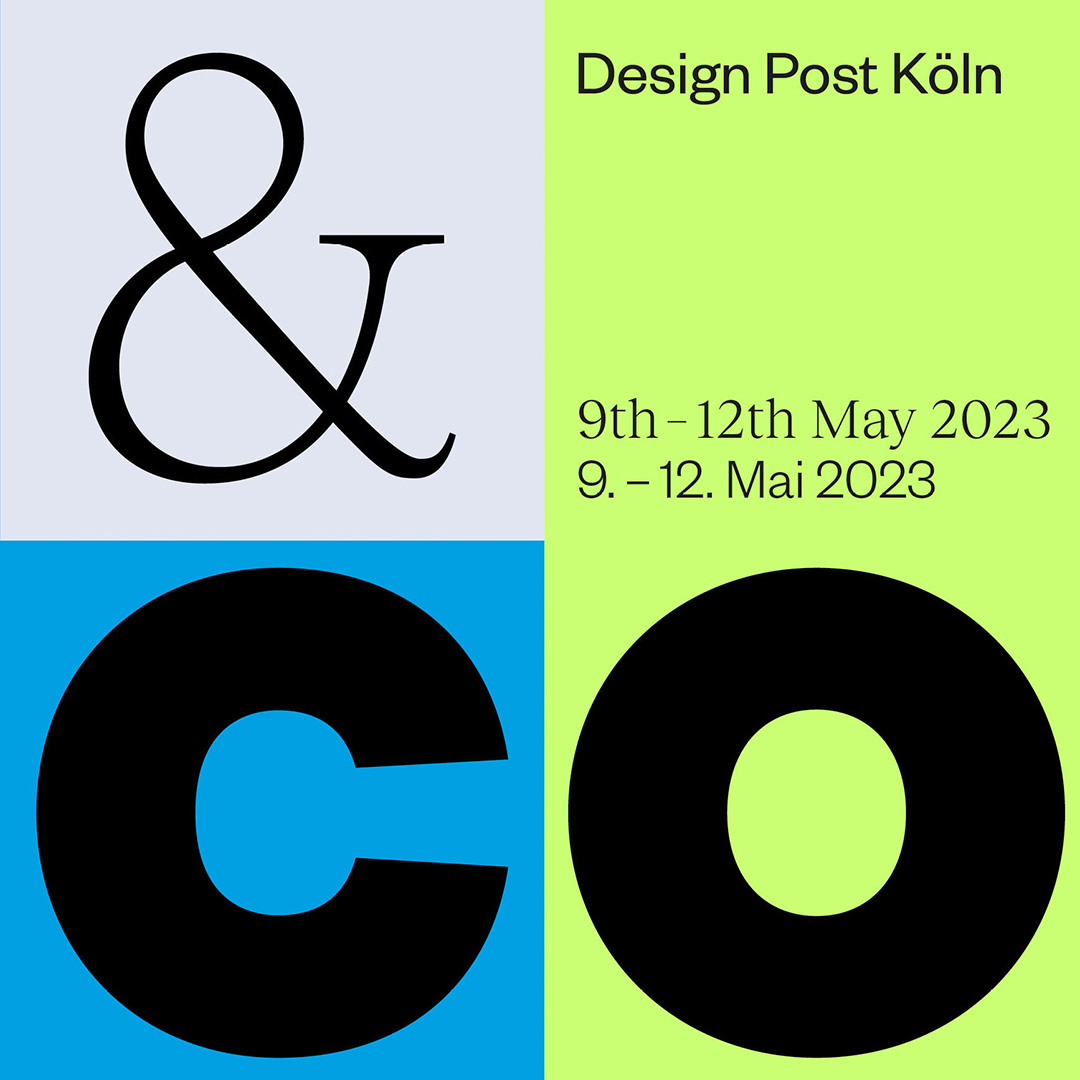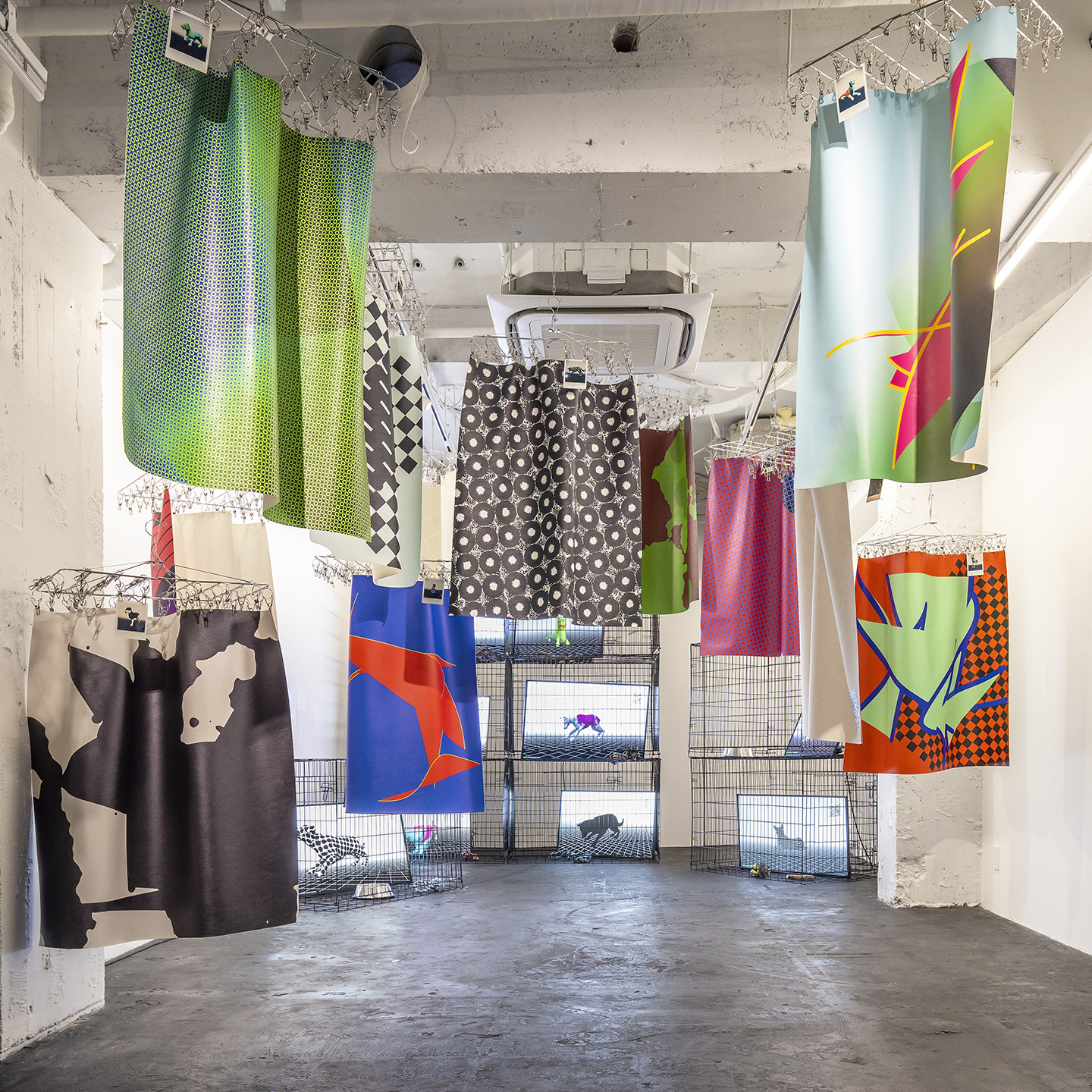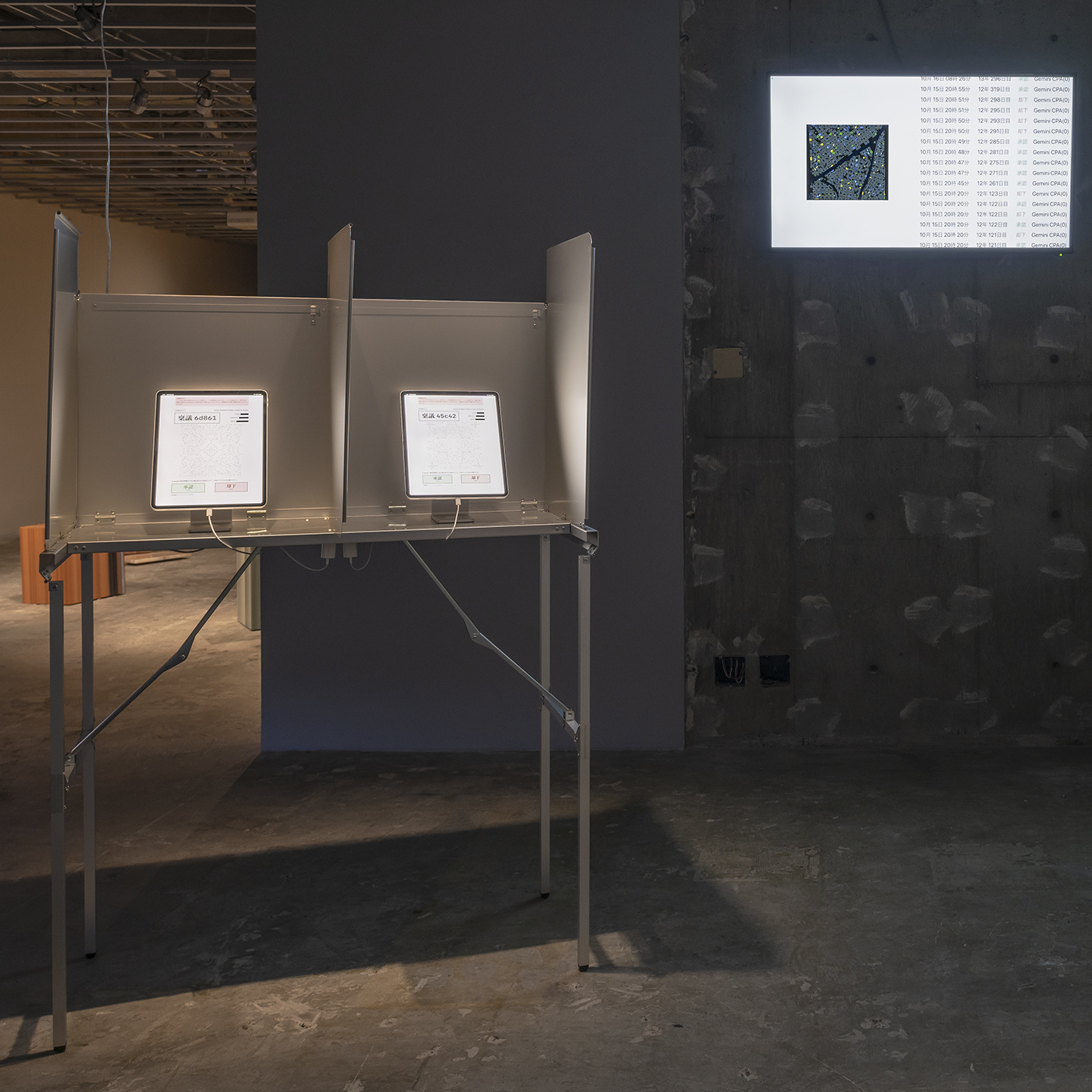Main visual:NOIZ, which supervised the exterior and landscape design of the “SHIBUYA CAST.”, a complex facility located at the intersection of Meiji and Cat Streets, unveiled a vertical version of a next-generation smart city, “SHIBUYA HYPER CAST. 2” image: NOIZ
With the development of digital technology, the world of digital data is becoming high dimensional, with an expansion of the areas that can be acquired and an increase in accuracy. Keisuke Toyoda, a specially-appointed professor at the University of Tokyo’s Institute of Industrial Science and an architect, is exploring a new way of architecture utilizing such high dimensional data under the theme of “architectural informatics”. What does Mr. Toyoda think of the potential that high dimensional data holds? We spoke with him about the changes that high dimensional data will bring about in the realms of “architecture” and “printing,” and the future world that these changes will lead to.
A turning point in thousands of years of history. What architectural changes have been brought about by the high dimensions of information?
ー What is the concept of “architectural informatics”?
Toyoda: “Architectural Informatics” is a concept that started with the idea of fostering perspectives, technologies, people, and organizations to redefine architecture in the context of the development of digital technology.
Architecture is one of the oldest professions in the world, and over its long history, the type of business has been fixed. However, with the evolution of digital technology, the data that can be handled has become high dimensional, with drawings that were drawn in two dimensions becoming three dimensional data, and structures, materials, and even the behavior of people and objects being handled as data. This is a major turning point in the thousands of years of history of architecture, and I believe it is necessary to rethink architecture from a new perspective rather than the conventional fixed form.

ー When did Mr. Toyoda realize the need for “architectural informatics”?
Toyoda: I started advocating the concept of “architectural informatics” about 15 years ago, but I felt the need for it much earlier. I was in the U.S. before 2007, when I established NOIZ, an architectural design office. There, I saw cutting-edge examples of digital fabrication, such as paperless studios where design drawings are completed in the computer instead of being printed on paper, and digital fabrication where buildings are created based on data.
Seeing such examples, I felt the need for architecture that successfully incorporates digital technology, but it was not very widespread in Japan at the time I returned to Japan. I thought it was necessary to let everyone know about it first, so I gave it the name “architectural informatics. Since then, as information has become high dimensional, various possibilities have expanded in the field of architecture, and here we are today.
ー What can we do in architecture now that information has become high dimensional?
Toyoda: For example, there is a technology called BIM (Building Information Modeling) that has emerged following CAD (Computer Aided Design), which is a technology for digitizing design drawings. BIM is similar to CAD, but it is not a digitized version of hand-drawn drawings, but a system that contains all the data about the building, including material thicknesses, product numbers, and manufacturing processes. This allows us to retrieve, edit, and communicate the data we want as needed.
Another area we are working on at NOIZ is the conversion of static data obtained from CAD, BIM, etc., which is closed to the architectural world, into dynamic information. By describing data after the building is completed into dynamic data with updatability, architectural data can be used in areas other than architecture, such as games, VR, and robot control.

ー What are some of the areas where high dimensional data has a strong impact outside of architecture?
Toyoda: I think all areas where information needs to be communicated are targets. One such area is “printing. Architecture, too, is an act of slowly transmitting the information in the mind of the architect within a social system and turning it into something physical, and in a broad sense, it can be seen as an “act of social printing”.
Same thing happens in print as “transition from Google to ChatGPT”
ー How is the role of printing changing with high dimensional data?
Toyoda: I believe that printing is the objective transmission of information to others through the three processes of “scanning and reading the object,” “editing the read information,” and “outputting the edited information,” but it is common knowledge that the information being transmitted is two-dimensional.
However, the information we communicate does not necessarily have to be two-dimensional, but rather high dimensional. As the data that can be handled becomes high dimensional, it will become possible to scan 10-dimensional information and transmit it as 10-dimensional, or to edit it and output it as 3-dimensional information. The future of printing may be to be able to freely output all dimensions in various combinations.

ー What changes will occur as a result of being able to output all dimensions at will?
Toyoda: I think we will see a similar shift in the world of printing as with the transition from search platforms such as Google to ChatGPT, an AI chat tool developed by OpenAI. Google treated static data such as words, which can be described as data, as a unit. On the other hand, GPT-4, the latest model of ChatGPT, functions as a “high dimensional version of Google” that reads and outputs dynamic, high dimensional information in the form of natural language, such as relationships between objects, as a unit on the Internet.
In printing as well, the unit of information that can be put into an object such as paper has been taken for granted, but as information becomes high dimensional, it will become possible to package and communicate the entire action, including the relationship between people and the time axis. I believe that this will lead to an unlimited expansion of possibilities in printing, similar to the various possibilities created by the GPT-4.
What are the “overwhelming advantages” of printing companies compared to OpenAI and Google?
ー How will the role of existing printing companies change as the possibilities expand infinitely?
Toyoda: It is easy to understand when compared to companies such as Google and OpenAI, but where printing companies have an overwhelming advantage is in the connection with the physical layer, “turning things into data and data into things” in the process of editing information. It may be that the main business of printing companies will be to specialize in these functions that companies closed to the information world, such as OpenAI and Google, do not have, and to prepare archives and formats of data to be distributed throughout the world.

ー If you specialize in turning things into data and data into things, will printing companies no longer need functions such as editing and communicating information?
Toyoda: I don’t think it will be completely unnecessary, but as the act of printing is distributed across the network, AI could take on a large part of the editing and transmission of information. Even now, AI is autonomously processing the information we send from a contextual viewpoint, and the processed information is transmitted to others.
As this progresses, I believe that ambiguity will become a value not only in printing, but in all areas. For example, in architecture, architects currently decide everything, including the position and dimensions of screws, but eventually, by communicating a general image to AI, it may propose architecture that is different from the original intention but still has new possibilities. Of course, this does not mean that ambiguity is good for everything, but it is a prerequisite for situations such as being able to retrieve accurate information as needed.
ー As more and more accurate and ambiguous information becomes available, there may be a change on the part of the recipients of information.
Toyoda: I think change is already taking place. For example, with music, in the past, people used to purchase and enjoy CDs or vinyl records that had a fixed structure, such as the order of the songs. But now, with the spread of streaming, it is common to listen to songs suggested by the service on shuffle playback. Some of those songs include songs that we don’t know whose songs they are. It has become the norm for us to passively enjoy things that are selected on the spot by AI and for which we do not know who created them.
On the other hand, in a world where people can receive information passively, the ability to search for information will be valuable. Being able to search for information should lead to the ability to edit and create it oneself. In fact, in the field of music, some people are becoming popular by searching for music they would like to recommend, like DJs, and publishing their edited playlists.
The main content “unnamed – design seen from a different perspective -” designed by NOIZ for “Tokyo Midtown DESIGN TOUCH 2021” held in the fall of 2021.
A “real world story” that will be valuable as all people become creators.
ー People who used to be the recipients of information are now becoming like creators.
Toyoda: Yes, that’s right. I think that the two extremes of “creators” and “people who enjoy the works” were unnatural in the past. Now, there is more of a gradation, with multiple aspects of a person being mixed within a single person such as 10% being creator and 30% being enjoying the works, and so on. It is more natural to be able to choose to enjoy other people’s work today and create tomorrow, and I think this trend will accelerate in the future.
ーAs all kinds of people become creators, more and more content will be created and will become wildly popular, what kind of content do you think will be popular among them?
Toyoda: There is already a lot of content being dropped daily on social networking sites, but I personally believe that it is a matter of probability as to which content will be popular and which will become buzzworthy. There are people who are good at creating buzzworthy content trends and such content, and those who are not good at them, but there are almost no one who can inevitably create a hit.
In the current situation where centralized services such as Facebook and Twitter artificially manage content, we may still be able to control them, but when a world with decentralized systems such as “Web3” arrives, no one will be able to control them anymore.

ー What is the value of content in a world where there are so many different types of content and it is difficult to control them?
Toyoda: I think that real-world stories, in other words, bundles of information shared by many people, will become more important. The information that can be handled digitally will continue to increase in dimension, but the stories, experiences, history, and cultural values that exist in the physical world are too vast to be described digitally.
That is why the real world has the strength to bundle them together into a form that is easy for anyone to share. What kind of stories in the real world can supplement the areas that cannot be covered by the digital world? The higher the dimension of information becomes, the more value will be created in such things.
Guest Profile
-
Keisuke Toyoda
Specially Appointed Professor, Institute of Industrial Science, University of Tokyo, NOIZ, gluon
Keisuke Toyoda
Specially Appointed Professor, Institute of Industrial Science, University of Tokyo, NOIZ, gluon
Born in Chiba, Japan in 1972, he worked at Tadao Ando Architect & Associates from 1996 to 2000, SHoP Architects in New York from 2002 to 2006, and founded NOIZ in 2007 with Jia-Shuan Tsai based in Tokyo and Taipei, which was joined by Kosuke Sakai in 2016. In 2017, he and Mitsuhiro Kaneda founded gluon, a cross-regional platform with the theme of "Architecture/Urban x Tech x Business" as its theme. Advisor to the Osaka-Kansai Expo 2025 Invitation Venue Plan (2017-2018). Vice President of the Architectural Informatics Society (2020-). Osaka Common Ground Living Lab (2020). Founding Director of General Incorporated Corporation Metaverse Japan (2022-). Specially Appointed Professor, Interspace Research Center, Institute of Industrial Science, University of Tokyo (2021-).
Co-created by
-
Ishizuka Shin
Writer
Ishizuka Shin
Writer
Editor and writer, born in 1992, worked as a reporter for the weekly fashion newspaper WWD JAPAN from 2016 to 2021, focusing on the magazine/media industry and the digital domain (EC, fashion tech, etc.). He left the company in 2021 and is currently working as a freelance editor and writer while engaging in marketing work at a manufacturer company.
- Related link: https://twitter.com/___sxish___
-
Nozomu Toyoshima
Photographer
Nozomu Toyoshima
Photographer
After working at a studio in Tokyo and as a freelance camera assistant, he has been working as a photographer since 2011.
- Related link: http://toyoshimanozomu.com/
Tag
Share
Discussion
Index
Index
Archives
Recommend
Recommend
Recommend
Recommend
Recommend
-

{ Community }
GEMINI Laboratory Holds “&CO,” Its First Joint Exhibition, at German’s Design Post
GEMINI Laboratory Holds “&CO,” Its First Joint Exhibition, at German’s Design Post
GEMINI Laboratory Holds “&CO,” Its First Joint Exhibition, at German’s Design Post
-

{ Special }
Adventure Metaverse
Adventure Metaverse
Adventure Metaverse
-

{ Community }
Five Science Fiction Novels Selected By Hayakawa Publishing Editor Shota Ichinose To Predict The Future 30 Years From Now
Five Science Fiction Novels Selected By Hayakawa Publishing Editor Shota Ichinose To Predict The Future 30 Years From Now
Five Science Fiction Novels Selected By Hayakawa Publishing Editor Shota Ichinose To Predict The Future 30 Years From Now
-

{ Community }
Is field recording in VR possible?Eisuke Yanagisawa speaks about the act of listening, sound information volume, and technology
Is field recording in VR possible?Eisuke Yanagisawa speaks about the act of listening, sound information volume, and technology
Is field recording in VR possible?Eisuke Yanagisawa speaks about the act of listening, sound information volume, and technology
Hot topics
Hot topics
Hot topics
Hot topics
Hot topics
-

{ Community }
Scent Transcends Memory to Change Behavior. The Future of Digital x Olfaction, by Scent Marketing Pro Gouchi Hamada
Scent Transcends Memory to Change Behavior. The Future of Digital x Olfaction, by Scent Marketing Pro Gouchi Hamada
Scent Transcends Memory to Change Behavior. The Future of Digital x Olfaction, by Scent Marketing Pro Gouchi Hamada
-

{ Community }
The stage is a restroom designed by Tadao Ando. Possibilities of media mix that GEMINI pioneers.
The stage is a restroom designed by Tadao Ando. Possibilities of media mix that GEMINI pioneers.
The stage is a restroom designed by Tadao Ando. Possibilities of media mix that GEMINI pioneers.
-

{ Community }
“Conveying the Moment of ‘Now’ in History: Catalan Artist Xavi Bové’s Light Expressions”
“Conveying the Moment of ‘Now’ in History: Catalan Artist Xavi Bové’s Light Expressions”
“Conveying the Moment of ‘Now’ in History: Catalan Artist Xavi Bové’s Light Expressions”
-

{ Community }
“Designing with Heart: How Amanda Talbot is shaping a better future through emotionally intelligent AI”
“Designing with Heart: How Amanda Talbot is shaping a better future through emotionally intelligent AI”
“Designing with Heart: How Amanda Talbot is shaping a better future through emotionally intelligent AI”
-

{ Community }
Unearthing the Future: How ancient history can guide modern innovation with Darius Arya
Unearthing the Future: How ancient history can guide modern innovation with Darius Arya
Unearthing the Future: How ancient history can guide modern innovation with Darius Arya
-

{ Community }
Interview with Masayoshi Yokoyama from Ryu Ga Gotoku Studio. Talks about reality in games and the future of the industry
Interview with Masayoshi Yokoyama from Ryu Ga Gotoku Studio. Talks about reality in games and the future of the industry
Interview with Masayoshi Yokoyama from Ryu Ga Gotoku Studio. Talks about reality in games and the future of the industry
-

{ Community }
The new form of pilgrimage. What is the border of real and fictional worlds that Petra Szemán pictures?
The new form of pilgrimage. What is the border of real and fictional worlds that Petra Szemán pictures?
The new form of pilgrimage. What is the border of real and fictional worlds that Petra Szemán pictures?
Special
Special
Special
Special
Special
Featured articles spun from unique perspectives.
What Is
“mirror world”...
What Is
“mirror world”...
What Is
“mirror world”...
What Is
“mirror world”...
What Is
“mirror world”...
“mirror world”... What Is
“mirror world”... What Is
“mirror world”... What Is
“mirror world”... What Is
“mirror world”...
Go Down
Go Down
Go Down
Go Down
Go Down
The Rabbit
The Rabbit
The Rabbit
The Rabbit
The Rabbit
Hole!
Hole!
Hole!
Hole!
Hole!
Welcome To Wonderland! Would You Like To Participate In PROJECT GEMINI?




